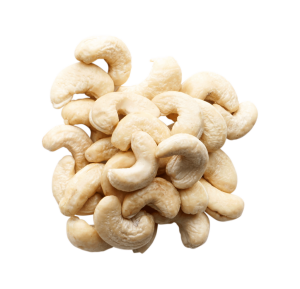Cashew nuts are mainly consumed as a roasted and salted snack. Lately, the industry has gained interest in broken kernels because of their added value. In this study, defatted cashew nut flour (DCF) underwent simulated gastrointestinal digestion to obtain a soluble (CDs) and an insoluble (CDi) digested fraction. These fractions, which resulted from the digestion of a complex matrix, were evaluated for antioxidant capacity of bioaccessible compounds (present on the soluble digested fraction, CDs) and their potential prebiotic effect, considering that the insoluble digested fraction (CDi) could be fermented by the microbiota in the gut. The DCF had a high protein content (40.74%), being nutritionally characterized as a balanced source of amino acids, with a predominance of aromatic amino acids (phenylalanine and tyrosine), threonine and histidine. The digested DCF presented 76.90% of the soluble components of low molecular weight (0.1-2 kDa), which is typical of antioxidant peptides. The soluble digested fraction (CDs) significantly increased the antioxidant capacity in relation to flour in the ORAC and ABTS assays and the aqueous extract presented the highest values (526.0 and 76.64 as µmol Trolox Eq./g sample, respectively). The CDs protected 29.03% of the supercoiled DNA band and ratified the potential antioxidant capacity after GID in a physiological assay. In addition, the insoluble digested fraction showed a potential prebiotic effect for Bifdobacterium lactis BB-12. Finally, simulated gastrointestinal digestion improves the bioaccessibility of CDF antioxidant compounds as a complex matrix, containing low molecular weight peptides and phenolic compounds, which become more available to react with reactive oxygen species (ROS). In addition, the potential prebiotic effect of defatted cashew nut flour has yielded a promising solution for the total reuse of broken cashew nut kernel as a functional food ingredient.
